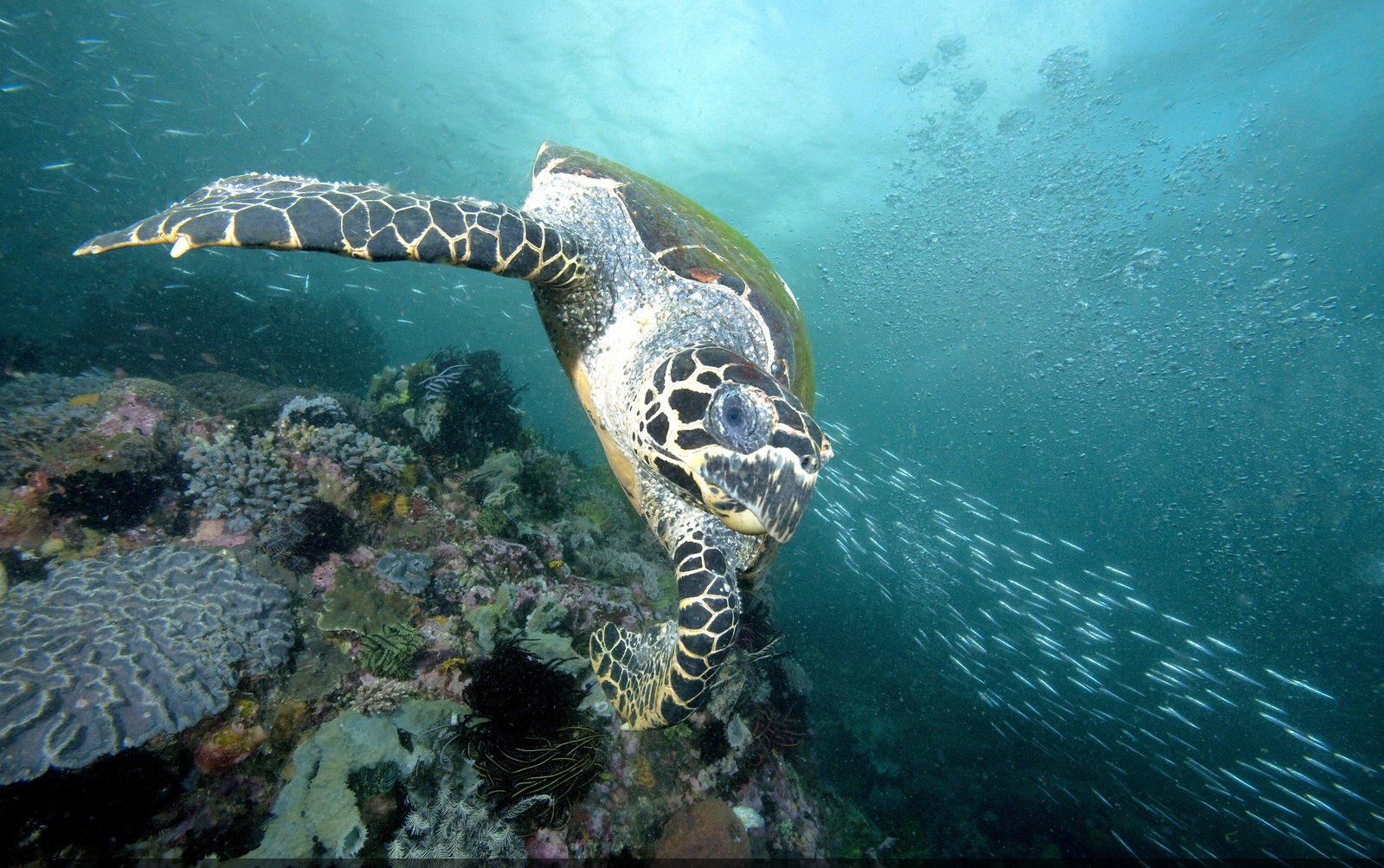Indonesia – Lesser Sunda
In 2013, the Coral Triangle Initiative Seascape Working Group identified Lesser Sunda as Indonesia’s top conservation priority. In the face of increasing interest by the Indonesian government to promote short-sea shipping in Indonesia, TNC and the Institut Teknologi Bandung recognized an opportunity to engage the government in an MSP process as a way of pre-empting conflicts between increased maritime transportation, fisheries, and natural resource management.
After analyzing options for implementing ecosystem-based management in the region, the project team found that performance zoning was the most appropriate tool for Lesser Sunda. Performance zoning seeks to address potential impacts arising from a certain use or activity by setting explicit performance standards for activities within a zone, rather than completely restricting the activity. This allows for a comprehensive zoning at a larger scale, where a single location can be designed for multiple uses. In Indonesia, the team identified ecosystem services (e.g., habitats providing nursery areas for commercially-important fish), ecological uniqueness (e.g., presence of endemic species), and biophysical factors (e.g., temperature, productivity) as key factors in zoning design.
Other principles of the MSP process include:
- Incorporate standards that simultaneously promote economic growth and allow for the protection of local resources.
- Improve capacity of central and regional government to implement performance monitoring
The process began by dividing the region into four areas based on key characteristics of the ecosystem, including existing conditions, levels of endemism, ecosystem sensitivity, and environmental services offered to local communities. TNC then ran 20-year projections for development scenarios for the Lesser Sundas Ecoregion ahead of regional planning workshops; parameters included socioeconomic factors and ecological factors. TNC also carried out TNC carried out a series of focus group discussions with relevant marine sectors to collect data on current and future uses.
Information from these scenario-planning exercises and stakeholder forums informed the government engagement process. Additional government buy-in for planning and enforcement is considered the next step in implementing the MSP process in Lesser Sunda. Meanwhile, the interest of Lesser Sunda MSP is growing in the Coral Triangle. During CTI Seascape working group meeting last November, all six CTI countries nominated Lesser Sunda MSP as the best practices. Nevertheless, Timor Leste interested to incorporate their country into the Lesser Sunda MSP design to better manage their marine resources.
TNC’s Role
- Process
- Stakeholder engagement
- Scientific/technical expertise
The Nature Conservancy developed a framework for MSP by analyzing existing government institutions and regulations, conducting stakeholder engagement workshops which included data collection and other information gathering activities, and developing a suite of planning scenarios. However, these resources are being threatened by unsustainable and destructive fishing pressure and increasing coastal development. In response to these threats, TNC and partners are supporting the Savu Sea Marine Protected Area Development Project.
Project Partners
Lead Institution: TNC; Institut Teknologi Bandung
Other Partners: Spatial Planning Directorate of Indonesia’s Ministry of Marine Affairs.
Project Status
A two-year MSP program plan for Lesser Sunda has been developed, including a timeline, funding needs, and work plan; however, movement towards implantation is still pending.
Fact Sheets and Project Links
Contact
Glaudy Perdanahardja
Ocean Protection Senior Manager
Indonesia Program Office
Email: gperdanahardja@tnc.org
Photo credit: © Jeff Yonover

